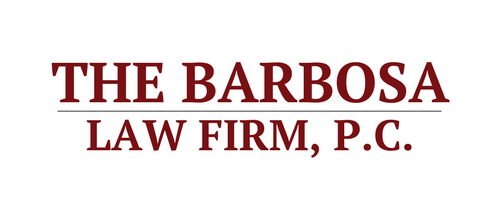How do I know if I have a “common law” marriage?
As a divorce attorney, we get inquiries regarding whether or not a person is married through the informal marriage process commonly referred to as a “common law” marriage.
In any situation where a common law marriage is alleged, there must be proof of the marital relationship as provided by the Texas Family Code section 2.401:
(a) In a judicial, administrative, or other proceeding, the marriage of a man and woman may be
proved by evidence that:
(1) a declaration of their marriage has been signed as provided by this subchapter; or
(2) the man and woman agreed to be married and after the agreement they lived together in this state as husband and wife and there represented to others that they were married.
(b) If a proceeding in which a marriage is to be proved as provided by Subsection (a)(2) is not
commenced before the second anniversary of the date on which the parties separated and ceased living together, it is rebuttably presumed that the parties did not enter into an agreement to be married.
(c) A person under 18 years of age may not:
(1) be a party to an informal marriage; or
(2) execute a declaration of informal marriage under Section 2.402.
(d) A person may not be a party to an informal marriage or execute a declaration of an informal
marriage if the person is presently married to a person who is not the other party to the informal marriage or declaration of an informal marriage, as applicable.
If the parties have not executed and registered a declaration of informal marriage as prescribed under Tex. Fam. Code § 2.402, a party claiming the existence of a marriage must establish that he or she has met the statutory requirements for an informal marriage enumerated above and had the capacity to enter into the marriage.
Can anyone create a Common Law marriage?
The following parties cannot enter into an informal marriage:
(1) a person under the age of eighteen;
(2) parties of the same gender;
(3) related parties (including an ancestor or descendant, whether by blood or adoption; a brother or sister, whether by whole or half blood or by adoption; a parent’s brother or sister, whether by whole or half blood or by adoption; a brother’s or sister’s son or daughter, whether by whole or half blood or by adoption; a current or former stepchild or stepparent; and a son or daughter of a parent’s brother or sister, whether by whole or half blood or by adoption); and
(4) a person who is presently married to someone who is not the other party to the informal marriage.
The informal marriage begins when all the statutory elements are concurrently satisfied in Texas and the parties have the capacity to marry. An informal marriage, like a ceremonial marriage, lasts until it is dissolved by death, divorce, or annulment.
Do I have to register a Common Law marriage?
The declaration and registration of an informal marriage is governed by the Texas Family code section 2.402 with the following requirements:
(a) A declaration of informal marriage must be signed on a form prescribed by the bureau of vital statistics and provided by the county clerk. Each party to the declaration shall provide the information required in the form.
(b) The declaration form must contain:
(1) a heading entitled “Declaration and Registration of Informal Marriage, ___________
County, Texas”;
(2) spaces for each party’s full name, including the woman’s maiden surname, address, date of birth, place of birth, including city, county, and state, and social security number, if any;
(3) a space for indicating the type of document tendered by each party as proof of age and identity;
(4) printed boxes for each party to check “true” or “false” in response to the following
statement: “The other party is not related to me as:
(A) an ancestor or descendant, by blood or adoption;
(B) a brother or sister, of the whole or half blood or by adoption;
(C) a parent’s brother or sister, of the whole or half blood or by adoption;
(D) a son or daughter of a brother or sister, of the whole or half blood or by adoption;
(E) a current or former stepchild or stepparent; or
(F) a son or daughter of a parent’s brother or sister, of the whole or half blood or by adoption.”;
(5) a printed declaration and oath reading: “I SOLEMNLY SWEAR (OR AFFIRM) THAT
WE, THE UNDERSIGNED, ARE MARRIED TO EACH OTHER BY VIRTUE OF
THE FOLLOWING FACTS: ON OR ABOUT (DATE) WE AGREED TO BE MARRIED,
AND AFTER THAT DATE WE LIVED TOGETHER AS HUSBAND AND
WIFE AND IN THIS STATE WE REPRESENTED TO OTHERS THAT WE WERE
MARRIED. SINCE THE DATE OF MARRIAGE TO THE OTHER PARTY I HAVE
NOT BEEN MARRIED TO ANY OTHER PERSON. THIS DECLARATION IS TRUE
AND THE INFORMATION IN IT WHICH I HAVE GIVEN IS CORRECT.”;
(6) spaces immediately below the printed declaration and oath for the parties’ signatures; and
(7) a certificate of the county clerk that the parties made the declaration and oath and the place and date it was made.
It is very important for persons alleging an informal marriage to understand that there are time requirements and a statute of limitations that will limit the time during which a person can allege an informal marriage.

